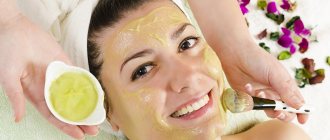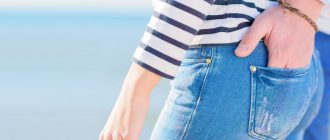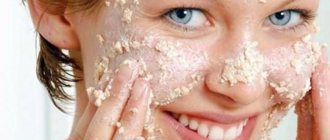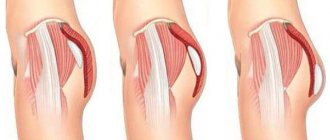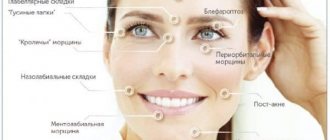- November 24, 2019
- Dermatology
- Olga Simchenko
A callus with a core causes significant discomfort and provokes severe pain when walking and manipulating the hands, depending on the location of the painful internal growth. In the center there is a rod covered with a cap.
It goes into the deepest layers, which then die along with the adjacent tissues. That is why it is not so easy to treat such a callus, since not all medicines reach its base. However, you can quite simply get rid of this formation, especially at the initial stage of development, when it is not yet very deep.
Features of the problem
A callus with a core has smooth and clear edges, as well as a yellowish-flesh color. Quite often it is called ingrown.
This type of skin growth is considered the most difficult and unpleasant to treat. The callus grows deep into the subcutaneous tissue, causing severe pain. Many dermatologists consider callus to be a type of hard callus and a late stage of its development. A dense rod, which looks like cartilage, is formed due to rapid cell division.
When you press on a callus with a rod, a very strong dull pain occurs, as the nerve fibers are compressed.
How a callus with a core is formed
If corns are treated incorrectly or ignored altogether, a problem can arise.
A root is formed inside the soft tissues, consisting of areas of damaged skin (dead epithelium), which constantly deepens. The rod presses on the nerve endings. The person first experiences discomfort, then severe pain. A callus with roots causes discomfort; its treatment takes a long time; after therapy, careful foot care is required.
After removal, the tubercle with a pinpoint depression quickly recovers, so any formations on the foot should not be ignored in order to begin treatment on time.
Causes
The main reasons for the formation of calluses with a core are:
- wearing tight or uncomfortable shoes;
- ignoring the presence of ordinary dry calluses;
- presence of a foreign object lodged under the skin;
- presence of fungi or viruses;
- improper hygiene measures.
When wearing shoes that cause discomfort, prolonged rubbing of the feet and toes occurs. If it is made of low-quality materials, it can not only cause intense friction, but also cause infection.
If you ignore the presence of dry callus and do not treat it in a timely manner, further coarsening of the skin layers occurs, which leads to the formation of a dense core. If small objects, such as a grain of sand, a splinter or small pebbles, get under the skin and remain in the deep layers of the skin for a long time, the dermis is gradually injured and a dry callus appears.
The treatment of dry calluses with a core is quite difficult, and it takes a lot of time to completely get rid of them. Often the only way to fix this problem is to remove it completely. However, there are also less radical methods of therapy.
Causes of corns on the feet
Skin renewal occurs due to keratinization of the surface layers of the epithelium. The stratum corneum thickens, the cells become denser, and then slough off. In areas of increased friction or pressure, the keratinization process occurs more actively to protect more delicate tissues from mechanical stress.
Corns on the feet occur on the foot at points that are subject to a lot of pressure. This may occur on the heels, at the base of the toes, or on the underside of the toes. BUT the process never affects the arch of the foot.
The main causes of corns on the feet are the following:
- Uncomfortable shoes - an incorrectly selected size or poorly shaped sole leads to uneven distribution of the load on the foot. In women, corns on the toes or on the toes can form when regularly wearing high-heeled shoes;
- flat feet - with pathology of the ligamentous apparatus of the foot, the load is unevenly distributed, the heel and other parts suffer. High blood pressure causes hyperkeratosis;
- valgus deformity of the foot - pathology of the joints leads to deviation of the position of the toes on the foot, the appearance of excess friction even when using the usual worn-in shoes;
- fungal infection – fungal infection of the skin of the foot increases cell division and the development of hyperkeratosis. The disease may be accompanied by the appearance of cracks in the heels, peeling of the spaces between the toes, unpleasant odor and itching;
- increased sweating - hyperhidrosis can be either an independent phenomenon or a consequence of wearing shoes made of synthetic materials that do not allow the feet to breathe. Constantly moisturized skin tolerates stress less well, and in some cases slips over the surface of the shoe, which contributes to the development of corns;
- overweight – with increased body weight, pressure on the support points increases. The feet experience increased stress, so the skin may react by forming corns.
Additional factors that contribute to the appearance of corns are diabetes mellitus, varicose veins of the legs with signs of venous insufficiency, trauma and inflammatory diseases of the joints of the legs. Stress and nervous disorders can indirectly affect the condition of the skin if they lead to sweating, changes in gait and other disorders.
Corns on the feet can form during pregnancy. A woman experiences increased stress on the musculoskeletal system, the center of gravity shifts, and her gait changes. Therefore, the consequence is hyperkeratosis in certain areas of the sole.
Main symptoms
The presence of a dry callus with a core can be determined by the following signs:
- unpleasant and painful sensations are observed;
- often growths form near the thumb or little finger;
- An ingrown callus greatly interferes with a person’s ability to walk normally.
At the initial stage of the appearance of such corns, a person feels a slight tingling in the area of their formation. The injured area itches quite often.
Similar symptoms are also typical for ordinary calluses, but if they are core calluses, then when the stratum corneum is removed, you can see the root, which looks like a small dark spot and remains in place. This rod causes pain when moving. For this reason, removing dry calluses with a core is a rather complicated procedure.
Features of corns on feet
In appearance, corns resemble dry calluses. It is located in areas of high pressure on the foot. Most often it is the heel, areas of skin on the metatarsus, and the pads of the toes. The way corns look does not depend on the patient’s age or the causes of the pathology.
On the heels, corns are often located in the center or border the edge. The skin is usually dry and rough to the touch. It differs in color from the surrounding tissues. Yellowish shades predominate, the edges of the corns are fuzzy, smoothly transitioning into healthy tissue.
With severe hyperkeratosis, the surface of the corn begins to peel off. It flakes off in the form of small scales or large layers of keratinized skin. Separation from the foot in the area of the corn occurs painlessly.
A characteristic symptom of corns is a decrease in skin sensitivity in the area of hyperkeratosis. Sensations from light touches and line touches are poorly experienced. But pressing on the lesion, especially in a vertical position, causes pain in the foot. In some cases, this leads to gait disturbances.
Corns with a rod
The thickness of the skin layer in the area of hyperkeratosis can vary greatly from patient to patient. But sometimes a dark dot appears in the center of the lesion. This is a corn with a stem, or a core callus. The reasons for the appearance of this form of pathology are precisely unknown. Presumably, the formation of the rod is associated with infection with certain types of human papillomavirus.
What does a corn with a stem look like: it is thickened white skin with a yellow tint. There is a dark brown dot in the center. When pressing on the center of the corn, a sharp pain appears. It is difficult to remove this type of corns on your own; this can lead to increased pain and the development of infectious complications.
Corns on fingers
Signs of hyperkeratosis appear less often on the toes than on the heel of the foot or metatarsal pads. The symptoms of corns on the fingers are not much different from those on other parts of the feet. More often they appear in areas experiencing increased loads. These are fingers 1 and 5, on the rest - less often.
Areas of hyperkeratosis may have a regular round or oval shape, but usually their contour corresponds to the area of increased impact. Corns can form not only on the plantar part, but also on the side surface; there can also be core forms on the fingers. This is observed with incorrectly selected shoes, which constantly rub in these areas.
Skin sensitivity in the area of corns is significantly reduced. But when you press on them with force or while walking, pain appears under the focus of hyperkeratosis. This forces you to select other shoe models and change the position of your foot when walking, which negatively affects your gait.
The addition of a fungal infection does not always make it possible to diagnose corns. The patient experiences itchy skin and peeling between the fingers. Hyperkeratosis can develop on the fingertip or tip. Over time, nails become involved in the pathological process. The following additional symptoms are characteristic of a fungal infection:
- thickening of the nail plate;
- cracks, splitting of the nail;
- discoloration, cloudiness or yellowing of the nail;
- increased fragility, longitudinal cracks.
Combined damage to the nail plate and foot requires treatment by a dermatologist.
Carrying out diagnostics
Before starting treatment, it is necessary to diagnose and determine the nature of such an abnormal growth as accurately as possible, so a correctly made diagnosis will help determine the program for future therapy. Usually, a dermatologist is visually able to determine the type of callus based on its appearance alone. You can confuse a callus with a wart, but there are some differences between them. Growth with a rod inside:
- does not bleed even with strong pressure;
- formed as a separate node;
- There is a small depression in the center.
It is important to conduct a comprehensive diagnosis, which includes blood tests:
- on sugar levels;
- glycated hemoglobin content;
- antibody titers to the HIV virus.
Only after diagnosis the doctor selects the necessary treatment.
What does a corn look like and can it be eliminated?
Corns bother many people, who pay attention to them only when the disease begins to cause obvious inconvenience.
Difficulty putting on usual shoes, pain when walking for a long time, the inability to wear shoes with heels - these are the consequences that can arise if the problem is left unattended.
If dry calluses appear, treatment begins as soon as possible. Otherwise, they will be very difficult to eliminate, and the consequences will only get worse.
Features of treatment
It is very important to know how to treat a callus with a core, since incorrect treatment methods can cause complications. Self-removal can be carried out only in the initial stages, when the formation has not yet grown deep into the soft tissue and its root is not too deep. At the same time, you should be prepared for the fact that the treatment process takes quite a lot of time and patience.
However, if the callus has already grown too much into the soft tissue surrounding the rod, then you should not try to remove it yourself. It is better to seek help from a doctor, otherwise you can cause significant harm to the body.
Anti-inflammatory and antifungal agents are used to remove callus. Basically, these are ointments that remove the causative agent of the disease and additionally prevent its formation.
Treatment of callus with medications
It is immediately worth noting that drug treatment of calluses has the least therapeutic effectiveness.
This phenomenon is associated with the inability of drugs to penetrate deep into tissues, eliminating the root of the formation.
The products used for core calluses often contain keratolytic components and can be effective at the beginning of callus development.
As a rule, products based on salicylic acid are used.
Salicylic acid is a keratoplastic and keratolytic agent.
In addition, it has an antibacterial and antifungal effect.
Salicylic acid works by softening keratin, a natural protein that is part of the skin's structure and produced by the body.
The drug has a softening effect on the stratum corneum of the dermis, which facilitates its removal.
Salicylic acid is often used in combination with other substances.
Allows for a higher therapeutic effect.
When using salicylic acid preparations, the simultaneous use of the following drugs is not recommended:
- Alcohol-containing medications.
- Any other local medications that contain dibenzoyl peroxide or retinoid.
- Soapy substances that have a drying effect.
- Cosmetics that have an exfoliating effect.
Drug treatment
Answering the question of how to treat a callus with a shaft on the foot, it must be said that medications help a lot, but they can only be used after consultation with the treating doctor. They will help you fix the problem at home.
Before using any product to treat calluses, it is important to steam and soften the skin. It is important to ensure that no infection gets into the open wound, and it is also important to completely remove the entire rod.
For home use, liquids and gels that freeze the formation, as well as callus plasters, are suitable. The main active ingredient of gels and liquids is salicylic acid. To avoid damaging healthy areas, it is important to strictly follow the instructions and precautions.
To remove dry calluses with a core, you can use Nemozol cream. You need to apply it directly to the affected area using a cotton swab, and then cover the treated area with a band-aid. After 2 days, remove it and remove the exfoliated skin. If necessary, repeat the procedure until the result is achieved.
A callus with a shaft on the foot can be removed using Super Antimozolin ointment. You need to apply this product thickly to the keratinized area and cover with a band-aid or cloth. If possible, keep warm, but do not heat it. After 2 hours, remove the skin and repeat the procedure.
Stop Corn liquid helps a lot. It should be applied to the steamed problem area 2-3 times a day, and then lightly cleaned with a pumice stone.
You can use a corn patch with a stick. This is a modern and quite effective tool. Its action is based on salicylic acid, as well as many other natural ingredients that enhance their effect. If the skin is damaged, you should not use this patch.
A good remedy is a patch for calluses with a “Salipod” rod. It is impregnated with salicylic acid, sulfur and other components. In order for this product to have an effective effect, here are the basic rules for using the patch:
- wash the area with the callus, pat dry with a towel;
- wipe the well-treated area with alcohol to remove excess fat;
- cut off a piece of plaster similar in size to the problem area;
- remove the film and stick to the affected area;
- secure it on top with a bandage or simply stick a bandage on it.
The course of therapy with a patch ranges from 2 days to 2 weeks, it all depends on the depth of the rod. It is contraindicated to apply to healthy skin; it cannot be used during pregnancy, or together with medications for diabetes and cancer.
You can use combination products that contain several acids at once, as well as natural ingredients. They are mainly used for old calluses. To enhance the effect, they are used as compresses after steaming the skin. Here are a few such tools:
- "Mozolin."
- "Green Pharmacy"
- "Bensalitin."
It is possible to eliminate callus with the help of such means only if they are used for a long time and regularly.
Treatment depending on location
The easiest way to treat a callus on the foot. In this case, there are practically no restrictions when choosing methods.
If the callus is located on the little finger, there are certain difficulties, since it is more difficult to fix the patch on it, and not all surgical methods of removal are allowed.
If the subcutaneous callus is located between the fingers, then it is especially difficult to deal with it. In this case, surgical removal in a clinic or the use of improvised means in the form of various phytotherapeutic recipes is indicated.
In the first case, we are talking about cryodestruction, that is, the formation on the toe is destroyed by exposure to liquid nitrogen. Under its influence, after several sessions, the rod and ingrown cap fall off on their own. The whole procedure takes little time, after which you can immediately return to your normal rhythm of life. You cannot try to cut it off yourself. This will only injure the callus.
There are home methods that are suitable for treating both interdigital formation and similar problems on the foot. In addition to classic baths, compresses based on aloe leaves are used. It is more convenient to fix them between the fingers, where they act as a plaster. A hard-to-reach place can be lubricated with a mixture of propolis in alcohol and various essential oils, covering it with a bandage.
Traditional methods
Many people are looking for ways to remove corns with a core using folk remedies. For this it is recommended to use baths.
A bath with soap and soda has worked well. If the stem of the growth is not too long, then this remedy will help quickly remove the callus. You need to dilute 1 tbsp in hot water. l. soda and the same amount of grated soap. Use the hand or foot bath for 30 minutes. Then rub the callus with a pumice stone. 5-10 procedures will be required.
You can use a mustard bath. To do this, dissolve natural dry mustard powder in hot water. Carry out the procedure for 30 minutes, and then rub the growth with pumice. More than 5 procedures will be required.
Propolis can be used to remove calluses. Steam the growth. Melt a little lard with propolis and form a ball. Mash it into a cake and apply it to the callus. Secure with a bandage and leave until the morning.
Before the procedure, steam your hands or feet (depending on where the callus is located) and wipe dry. Soak the medicinal patch with salicylic acid and propolis, stick it on the growth and walk with it for 2 days.
When treating calluses with a core with a remedy such as vinegar, you need to take a regular patch, apply vinegar essence to it, which needs to be diluted a little with water. Stick it on the growth, walk all day, then take it off at night, and in the morning stick the patch with vinegar again.
Take onion and garlic in equal proportions and prepare a paste from them. Apply it to the steamed formation, and make a bandage on top. To completely get rid of a callus with a core, approximately 10 such procedures will be required.
At night, apply a compress made from finely grated potatoes and onions. Wrap the resulting mixture in gauze and apply to the callus. Wrap the top with plastic wrap. Keep the compress on all night. In the morning, remove the formation and spread with rich cream.
Before using any of these remedies, you should consult a doctor so as not to harm yourself.
Operational solution
If traditional methods do not help, you can get rid of the problem using traditional medicine. She offers several solutions:
- surgery;
- laser therapy;
- cryotherapy.
Laser therapy is the most effective, as it allows you to achieve good results without damaging healthy tissue.
Cryotherapy is used for calluses that are old or have a large core.
It can also be simply cut out with a scalpel, but recovery will take longer.
Self-removal of callus
Before completely removing the callus with the shaft, it needs to be steamed a little. To do this, immerse your feet in a hot bath with mustard powder (you can replace it with soda or liquid soap). After 10 minutes, the dense top layer will steam and can be easily removed with nail scissors. After removal, the core of the callus will be visible. This is its root, which will return again without removal.
Carefully drop citric acid into the remaining rod. If desired, it can be replaced with celandine juice or vinegar. Then cover the wound with a plaster.
You can buy patches in pharmacies that help remove calluses. You need to stick the patch on the growth and leave it for the time specified in the instructions. Then remove the patch and cut off the upper softened part of the skin with scissors. Then remove the rod with tweezers. Pour iodine into the wound and tie it tightly. Sometimes you cannot remove the rod yourself. In this case, you need to apply a special patch until the rod comes out on its own.
Forecast
Callus is a condition that can be cured much better if treatment is started as early as possible. If pharmacy or non-traditional local remedies do not help, then you can remove the growth if you promptly contact a specialist who will select the optimal physiotherapeutic or surgical method of treatment. It is important to take into account all the features of the callus, namely its size, area of localization, and severity of symptoms.
You should not delay removing the core growth, since at an early stage you can get rid of it permanently quite quickly, without resorting to the help of specialists. With proper and timely treatment, the prognosis is generally positive.
Balm Karavaev for eliminating formations
Another popular remedy is Karavaev’s balm. Medicines are sold under several brand names, but only one has been officially registered - Vitaon.
Balsam Karavaev is a plant-based preparation. It contains essential oils of pine, cumin, rose hips, extracts of yarrow and St. John's wort, as well as celandine, which is considered an excellent remedy for warts and calluses. Vitaon also contains calendula extract. The balm has anti-inflammatory properties and helps heal wounds. But its effectiveness is lower than that of keratolytic agents.
Possible complications
If the callus is not completely cured, it grows deeper over time, causing the following complications:
- causes severe pain;
- leads to a decrease or even loss of performance;
- provokes the formation of deep cracks;
- provokes tissue decay during infection.
In addition, the presence of a callus with a core can disrupt the normal redistribution of weight on the leg muscles, joints, and nerve nodes during movement, which leads to inflammatory processes and deformation of the joints and muscle tissue.
What is hyperhidrosis
Hyperhidrosis is increased sweating, which leads to the formation of skin pathologies. An area with constant high humidity and a temperature comfortable for the growth of bacteria is created in the foot area. This causes an unpleasant odor and peeling of the skin in large areas.
The main reasons for the development of hyperhidrosis:
- disorders of the thyroid gland;
- wearing uncomfortable shoes with poor ventilation;
- the use of low-quality creams based on synthetic bases that form an airtight film on the surface of the skin.
The main problem with hyperhidrosis is thick and swollen skin. It is difficult to process using hardware methods. To relieve the main symptoms, it is recommended to sprinkle the damaged areas with baby powder or talcum powder.
To treat hyperhidrosis, alcohol-based antiseptic formulations are used. The treatment can be done in a beauty salon. After hygienic treatment, the feet are wiped and treated with talcum powder. Prepared feet are processed using hardware methods using cutters with a hardness of 100-280 grit. After completing the procedure, the master will definitely give recommendations.
General recommendations:
- use a deodorant recommended by a specialist;
- wear shoes and clothes made from natural materials;
- take good care of your shoes;
- Perform regular foot hygiene procedures at least twice a day.
- Pay special attention to the condition of the insoles.
Carrying out prevention
It is important not only to know how to remove a callus with a core, but also how to prevent its occurrence. Doctors say that following certain rules will help protect against the occurrence of unpleasant pathologies. The main means of prevention is maintaining good personal hygiene. To do this you need:
- wear clean and dry shoes;
- try to wear socks made of natural materials and regularly monitor their cleanliness;
- after a shower, it is good to clean the keratinized area with a pumice stone, and then apply a moisturizer;
- wear comfortable shoes made from natural materials.
If core calluses form quite often, then a consultation with an orthopedic doctor is required. Perhaps the reason for the formation of such growths is the incorrect position of the foot. Special insoles prescribed by an orthopedist will help solve this problem.
In any case, treatment will be faster and more successful if it is started immediately. You should not allow further ingrowth or spread of the callus. If a rod has formed, you need to consult a specialist.
Main skin problems on the feet
A podiatrist is regularly contacted with the following foot skin pathologies:
- calluses;
- cracks of different depths;
- dry skin;
- hyperhidrosis;
- corns;
- hyperkeratosis.
The specialist’s task is not only to identify the presence of pathology and select a method for eliminating it, but also to determine the causes of its occurrence - this will help carry out prevention and prevent the occurrence of pathologies in the future.
